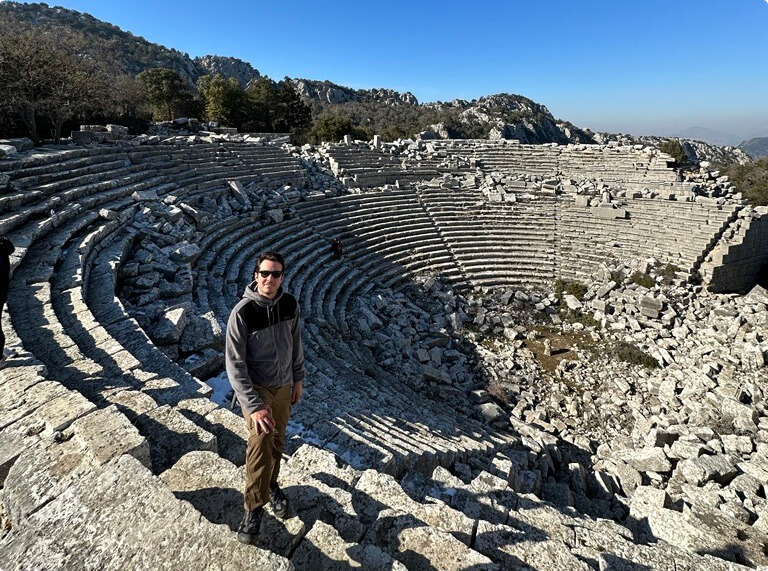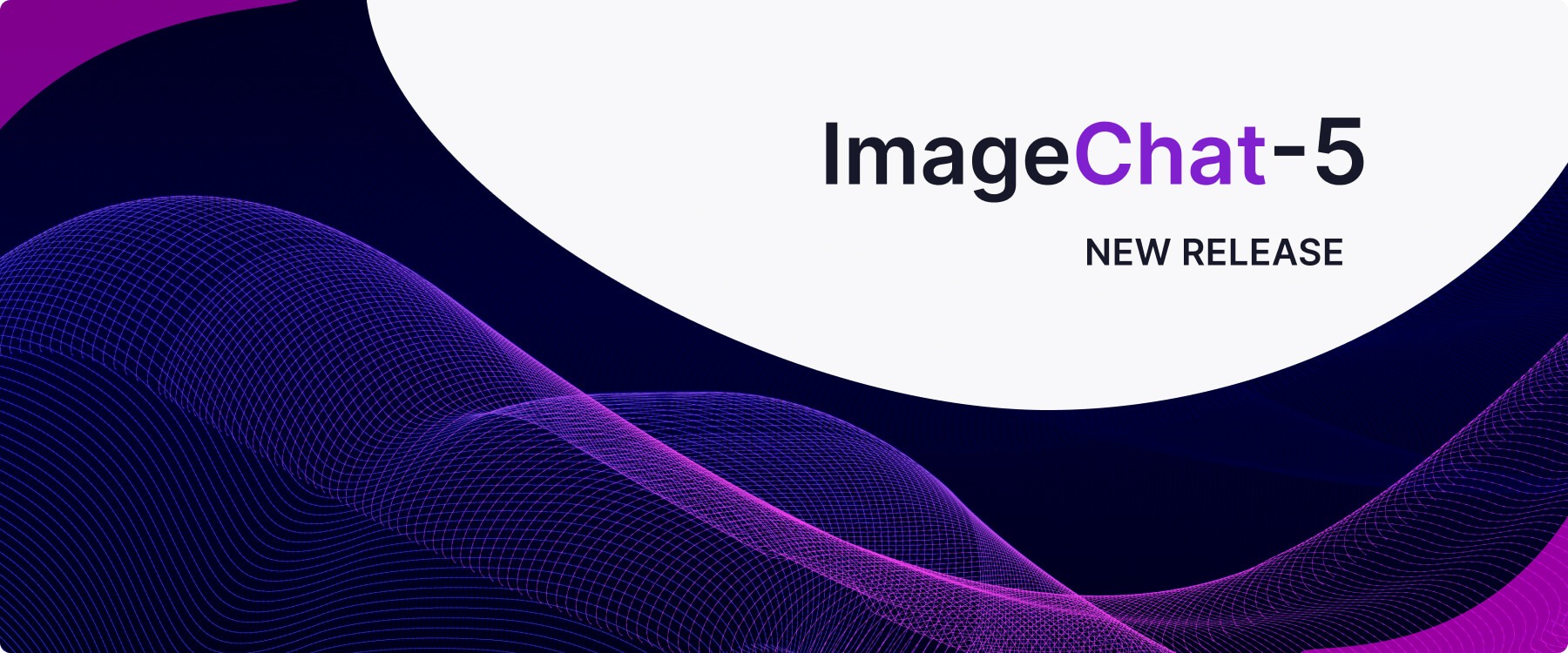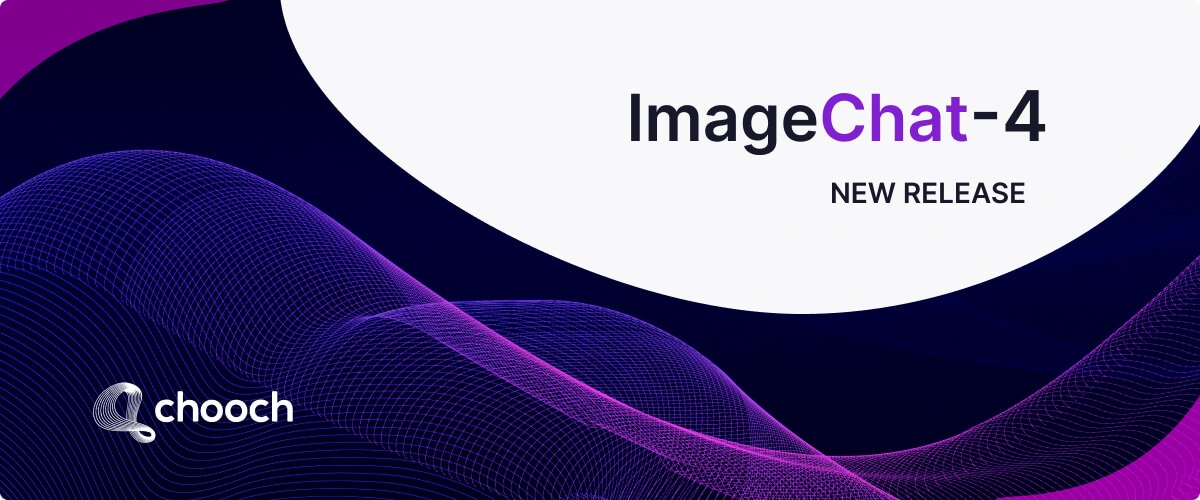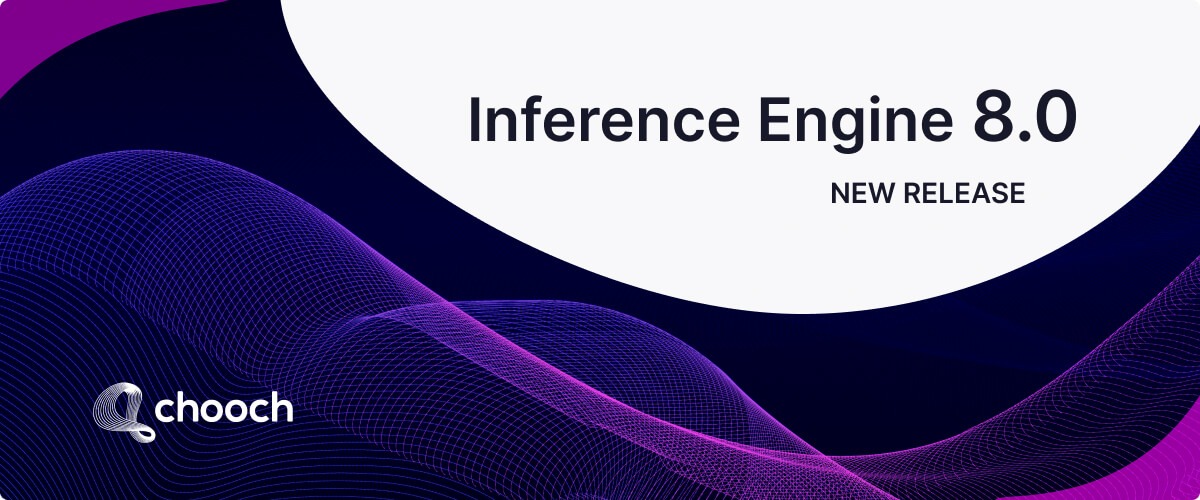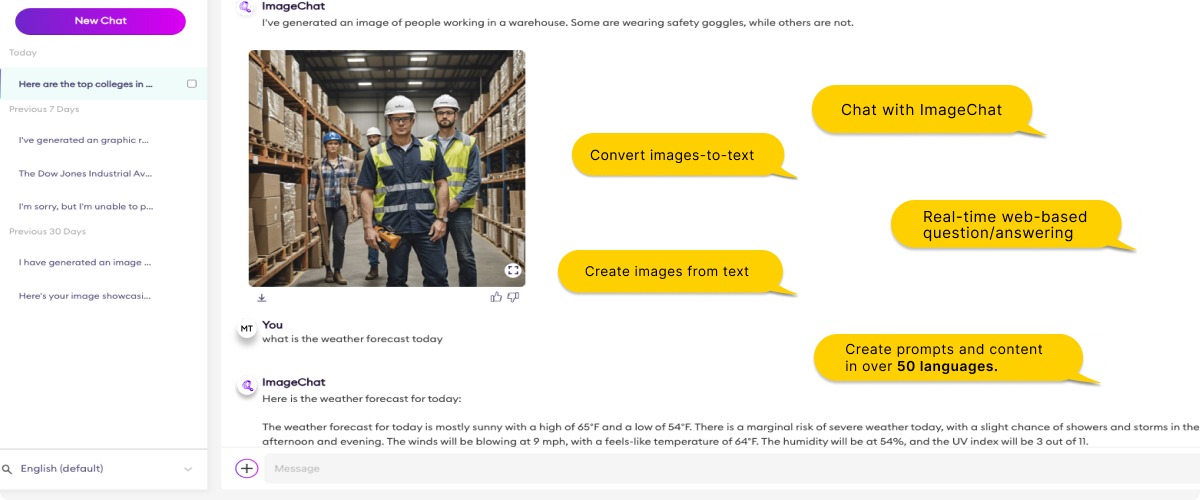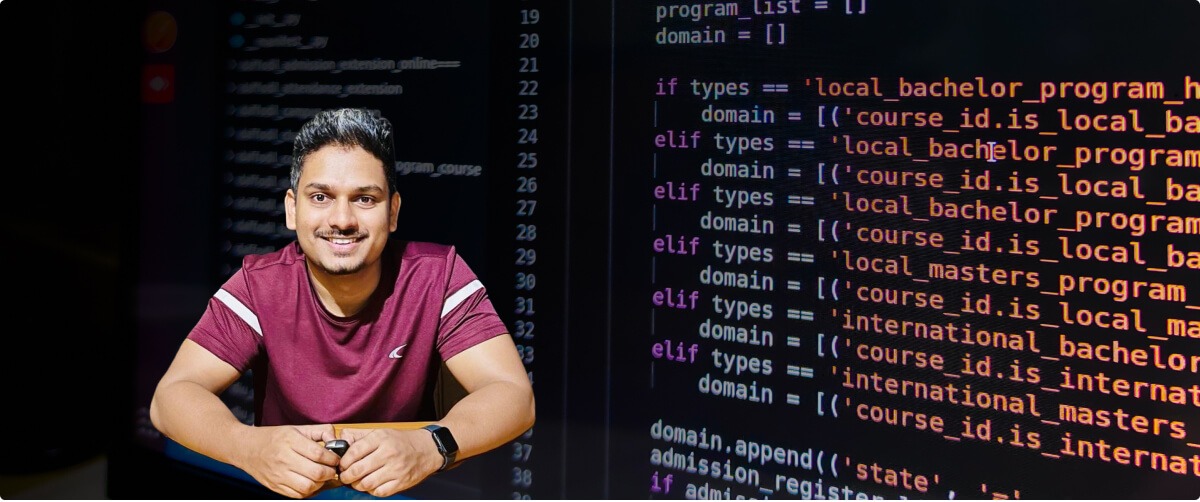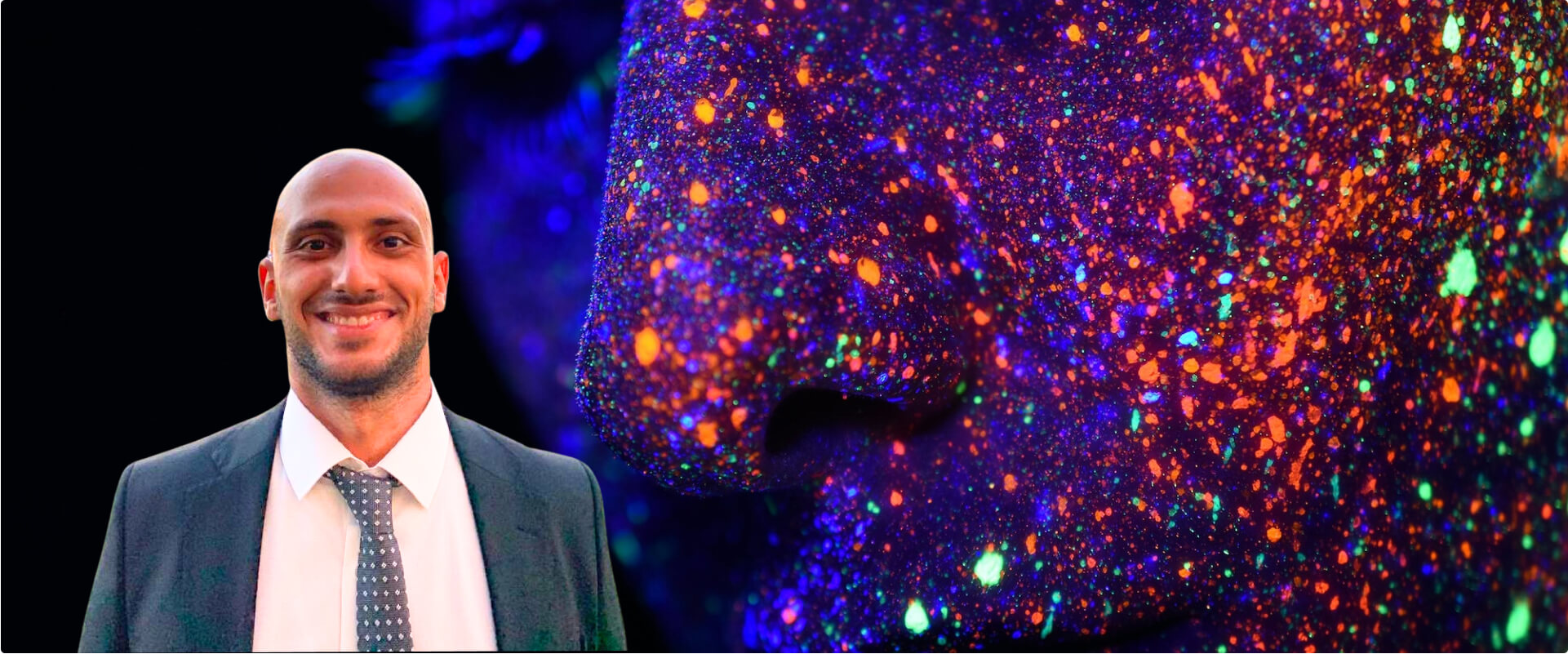No doubt, one of the most dramatic machine learning trends of 2023 i is generative and conversational AI. Think ChatGPT. Chooch recently released ImageChat™ which is an exciting new type of generative AI that combines image recognition with Large Language Models (LLM) to provide the ability to chat with images to derive more detailed, accurate insights about the image.
Using text prompts, people can ask images questions, and they will answer back with details of what is in the picture. For example, if you are looking at a picture of a fruit bowl, you can ask whether there are bananas in it, how many, what color, and so on. This technology has far reaching applications across many industries including its use for content moderation, image metadata and caption generation – even for fire detection.
Yet like other transformative technology, the newer technology is only as good as the talent building it. One of the challenges of developing the LLMs that power generative AI technology is finding expert machine learning engineers to build it.
Meet Ahmet Kumas, lead Machine Learning Engineer, who is heading the team building Chooch’s exciting new image-to-text generative AI technology called ImageChat.
Experienced. Skillful. Acutely focused.
Tell us a little bit more about yourself.
I currently live in Antalya, a city situated in Southern Turkey, renowned for its abundance of orange trees and refreshing sea breeze. I grew up in Isparta, which is located not far from Antalya. Before Chooch, I’ve had the opportunity to work at other AI-specific solution providers including Amani, Sampas, and Medvion.
At Amani, I was responsible for the development of “Know Your Customer” models, particularly in biometric and document data processing. While at Sampas, I contributed to solutions used in the European Union by creating AI models for smart cities and predictive water management.
At Medvion, I led a team of four ML experts in developing early disease diagnosis models using CT and MRI images. I was particularly proud of the work we did with pneumonia research. Our team worked on a vision-based solution that quantified the three-dimensional volume of damage within the lungs. The goal was to assess pulmonary damage in order to enhance the treatment process and optimize medication prescription.
In my free time, I enjoy various sporting activities, particularly board sports. I’m a huge snowboarding fan. I’m also a black belt Taekwondo athlete and a lover of camping, hiking, and cross-motorcycle riding which allow me to connect with nature.
How did you first become interested in machine learning?
My passion for AI began when I realized the positive impact it could have on healthcare research and the vast number of applications for AI. During my college years, I engaged in several AI research projects, specifically around epilepsy and pneumonia, and contributed to early-stage clinical trials alongside renowned doctors in Turkey.
My involvement in these projects resulted in multiple awards for proof-of-concept (PoC) products. Witnessing firsthand how AI and technology can improve patient outcomes and simplify their lives was a transformative experience that solidified my commitment to pursue a career in AI. Today, I leverage AI to build solutions that are helping healthcare organizations drive efficiency, generate more insights, and drive earlier and more accurate diagnoses across a range of diseases.
What do you like most about your job?
As the Lead ML Engineer at Chooch, I take immense pride in developing scalable and iterative AI products that can be effectively deployed in production environments. Our company is a pioneer in the industry, offering end-to-end solutions from data annotation and model training to out-of-the-box vision models and edge deployment.
I’ve worked to develop several models including Personal Protective Equipment (PPE), Fall Detection, Dangerous Activity Detection (e.g., fire, uncontrolled weapons, and dangerous zone management). It’s exciting to know these models are being applied across enterprises in many industries and in some, saving lives. I am proud to be part of the team that builds these solutions and makes them accessible to the larger ecosystem.
Tell us about your work with ImageChat™ at Chooch.
ImageChat is a state-of-the-art AI model that enables users to communicate with images and extract relevant information from them. One of the key advantages of ImageChat is its ability to quickly and systematically create an AI model through prompts covering a wide range of subjects. For more specific use cases, the object detector in Chooch Vision Studio can be used to localize objects and refine ImageChat results.
Training a large language model is a computationally intensive task that requires large-scale datasets and significant computing power. Some of the critical challenges faced when training LLMs are the iterative training, collection, and generation of the appropriate datasets. Developing and training LLMs requires a rigorous, systematic approach to ensure optimal performance and accuracy.
Go Chooch ML team!
What challenges do you find with developing generative AI apps or models?
The development of computer vision models presents numerous challenges that must be addressed with a systematic approach. This typically involves a series of steps, including data collection, model architecture design, data annotation, model training, and evaluation. The process is dynamic, as models must continually adapt to different environments to achieve optimal performance. To facilitate this adaptation, an additional layer known as active learning is often incorporated, which iteratively refines the model through multiple cycles of the steps until the desired performance is achieved. The sensitivity of this process underscores the importance of clear and thorough design and execution of each step.
What do you see as the next big thing in AI?
The advent of generative models is transforming the landscape of AI production, with these models becoming increasingly larger in scale. However, their use requires significant computing power, leading to a focus on optimizing future models for production deployment. Smaller models with higher accuracy will become a key point of competition in the LLM space. Additionally, there is growing interest in developing AI models that emulate human experience and incorporate collective knowledge. By merging such diverse information sources into one large AI engine, the potential for expanding the capabilities of AI models is significant.
Want to meet more of the Chooch team?
Check out other Chooch leaders below.


